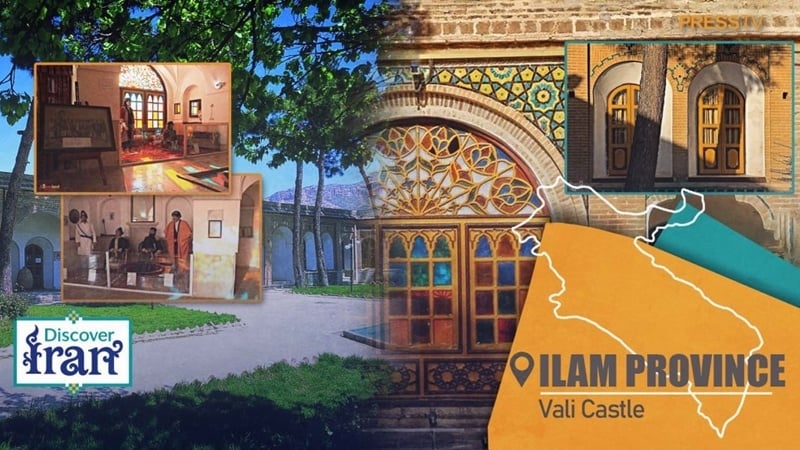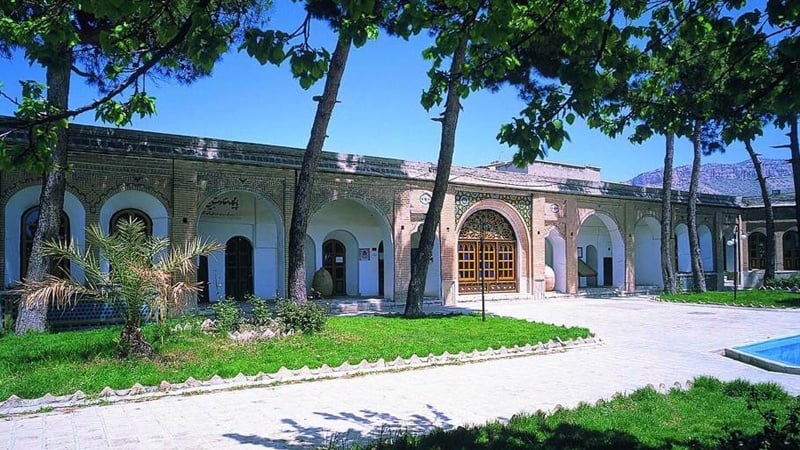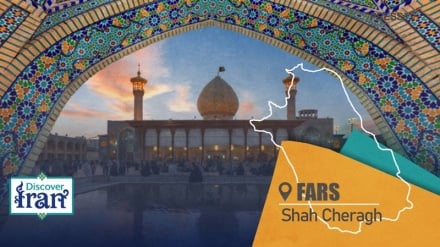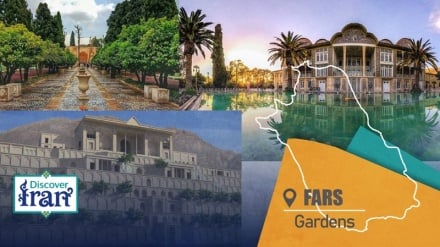Vali Castle: A timeless masterpiece of history and art in Ilam
-

Vali Castle: A timeless masterpiece of history and art in Ilam
Vali Castle, once the residence of the governor of Poshtkuh and now home to the Ilam Museum of Anthropology, is one of the province’s most captivating historical treasures. During the 8-year imposed war against the Islamic Republic, starting in 1980, the structure sustained partial damage.
Listed as a National Heritage Site in 1997, Vali Castle has become more than an architectural relic. It is a living cultural landmark.
According to Pars today, citing Press TV, in the heart of Ilam, a city in western Iran enveloped by the majestic Zagros Mountains, stands a structure that captures both the elegance of Qajar-era architecture and the soul of the region’s cultural heritage.
Vali Castle, once the residence of the governor of Poshtkuh and now home to the Ilam Museum of Anthropology, remains one of the province’s most captivating historical treasures.
It was commissioned in 1908 CE (1326 AH) by Gholamreza Khan Vali, the influential governor of Poshtkuh during the late Qajar period.
Perched originally on a mound known as Chogha Mirak, the castle was built under the supervision of architect Haj Darvish Ali from Kermanshah and master stonecutter Reza Qoli.
Over time, as the city expanded, the land around the structure was leveled, leaving the castle at the heart of Ilam.
Spanning nearly 4,700 square meters, with a built area of 1,466 square meters around a central courtyard of 700 square meters, the castle was both an administrative stronghold and a symbol of prestige.
Architecture
Vali Castle’s architecture reflects the refined tastes of the Qajar elite, blending practicality with decorative beauty.
The layout is symmetrical, with over 20 large rooms, five smaller rooms, four verandas, and two southern terraces, their arrangement mirrored on the eastern and western wings.

The difference in elevation—about 80 centimeters—between the rooms and the courtyard adds to the castle’s layered spatial design.
The northern corners of the castle feature two semi-circular watchtowers, once manned by guards, with crenellations for defense and arched passages for patrolling.
Three spiral staircases provided access to the roof, while the ceilings showcase a variety of traditional forms: domes, flat roofs, and pointed arches.
These elements reveal a fascinating fusion of Persian and European (particularly Roman) influences, a hallmark of Qajar-era architecture.
Ornamentation
The castle’s exterior is an artwork in itself. Hand-cut rectangular bricks form intricate geometric patterns, complemented by arched windows, stained glass, and delicately carved columns.
A central pool in the courtyard reflects the castle’s brick façade, framed by tall cypress and pine trees.
Inside, the reception hall (Shahneshin) once dazzled visitors with stucco reliefs of flowers and foliage and delicate mirror work—elements still visible today in the western wing.
Orsi windows (wooden lattice windows with colored glass) filter sunlight into a spectrum of colors, creating an atmosphere both intimate and regal.
Ingenious water supply
One of the most practical yet fascinating features of the castle was its water supply.
The Bibi Spring, located nearby, provided fresh water, which was channeled through clay pipes (tanbusheh) into the central courtyard.
Though the spring has dried up, the system remains a testament to the ingenuity of Qajar engineering.
From stronghold to museum
Vali Castle endured turbulent times. During the 8-year imposed war against the Islamic Republic, starting in 1980, the structure sustained partial damage.
In the late 1980s, extensive restoration was undertaken by the Cultural Heritage Organization. While the restoration introduced discreet reinforcements—such as steel beams in some ceilings—the original style was carefully preserved.
In 2006, the castle entered a new chapter of life as the Ilam Museum of Anthropology.
Today, its halls host exhibitions showcasing the diverse traditions of Ilam’s ethnic groups—Kurds, Lors, Laks, and Arabs.
Displays include traditional costumes, wedding customs, black tents (Siah-Chador), handicrafts such as kilims and felt weaving, and tools of daily life, bringing the culture of the region to life.
By transforming this Qajar-era residence into a museum of living traditions, Ilam has ensured that Vali Castle remains a vibrant bridge between the past and present.
A cultural landmark
Listed as a National Heritage Site in 1997, Vali Castle has become more than an architectural relic. It is a living cultural landmark.
During Nowruz (Iranian New Year), its courtyard comes alive with cultural performances, local cuisine festivals, and craft markets, drawing visitors from across the country.
The castle’s blend of Qajar elegance, meticulous restoration, and its role as a cultural hub make it one of Ilam’s most significant attractions.
Vali Castle is more than a monument of stone and mortar. It is a preserved fragment of Ilam’s soul. Its walls stand as witnesses to political authority, cultural sophistication, and the resilience of heritage.
MG


